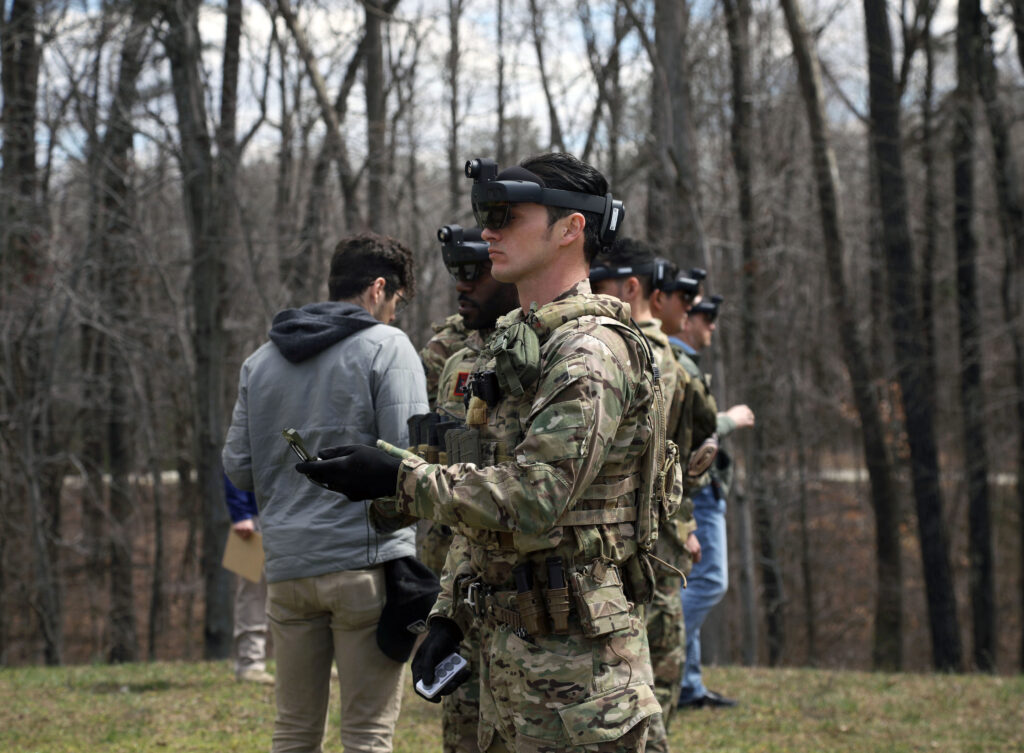
A soldier checks his IVAS goggles’ navigation aides against his compass.
ARLINGTON: “When a soldier says, ‘this sucks,’ it may not be technical, but it has great meaning,” said Brig. Gen. Anthony Potts, the Army’s modernization director for infantry gear. “We can spend a lot of money building something that meets every single one of our requirements, and if the soldiers don’t love it, they won’t wear it… and then it’d be a waste.”
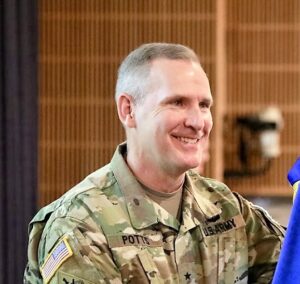
Brig. Gen. Anthony Potts
In a return to storied modifications made by troops during World War II and other conflicts, ordinary foot troops doing field tests are now driving development of the Integrated Visual Augmentation System, not the formal requirements or top-down directives from generals and program managers, Potts told an Association of the US Army conference here last week.
“Our number one factor that we evaluate …with IVAS is this: Do soldiers love it?” he said. “If that’s a little bit soft and squishy, I got it — it’s soft and squishy.”
IVAS is the Army’s attempt to combine two kinds of night vision (infrared and light amplification), a targeting scope wirelessly linked to the soldier’s weapon, navigational markers superimposed on the soldier’s field of view plus other augmented reality aides into a single set of sturdy goggles, a heads-up-display built around a militarized Microsoft HoloLens.
The Smell of Code in the Morning
The tech giant’s engineers are in the field with soldiers, listening to their criticisms and suggestions, and sometimes rewriting software on the spot. “It’s cold, it’s raining, and you see these young people from Microsoft … they’re out there at 2:00 in the morning. They got their headphones on, they’re under their blankets with their hoodie, and they’re coding,” Potts said. “They’re having an absolute blast.”
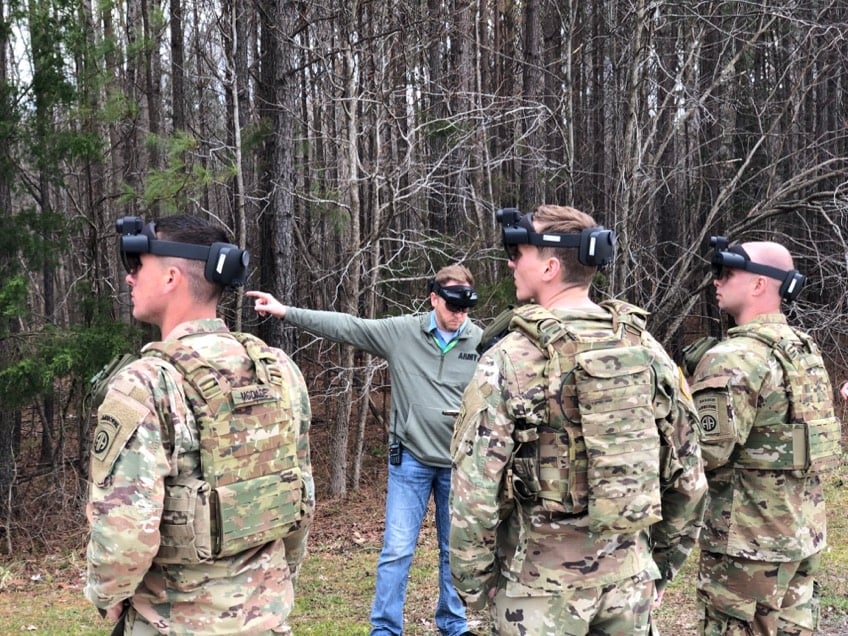
Soldiers train with the IVAS augmented-reality headset at Fort Pickett.
Other unexpected improvements have come from junior members of Potts’ own Soldier Lethality Cross Functional Team, which brings together experts from across the Army’s traditionally balkanized bureaucracy.
One group, Potts recounted, figured out how to transmit live surveillance video from a squad’s palmtop mini-drones, not just to the operator, but directly to the goggles of any soldier in the squad. Then, he went on, another group topped that by developing an AI tracking algorithm that automatically identifies potential targets, like people and vehicles, tracks them as they move, and highlights them on the display.
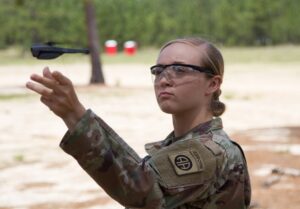
An 82nd Airborne soldier trains with a Black Hornet mini-drone before deploying to Afghanistan.
“Then the next guy comes in, so now we’re in this one-upsmanship in innovation,” Potts said. This upgrade allows the drone to download its surveillance data to one of the mini-servers carried by the squad, which then turns 2D imagery of a given area into a 3D model. This isn’t just a map. It’s actually a small virtual reality that soldiers can call up on their goggles and explore, letting them check out potential chokepoints, lines of fire, and approach routes before they even see the real terrain.
“It created a three-dimensional model of that entire site within about eight minutes,” Potts said. “We created basically about a 20-foot by 20-foot three-dimensional model [that] we can walk around.”
The next upgrade his team is working on, Potts said, is adding virtual Army vehicles to the 3D model, so soldiers can determine in advance whether their trucks and tanks can actually fit through chokepoints like alleys or mountain roads.
When Less Is More
At the same time that bottom-up innovation is adding new features, Potts said, that same feedback is leading the Army to take some things away, reducing the system’s cost and bulk by removing whatever soldiers don’t think they’ll need.
For example, Potts said, the original objective was for IVAS to provide such high resolution that soldiers could identify a potential target 900 meters away – more than half a mile – at night. But physics dictate that, the farther away you want to see, the larger the aperture you need to collect the necessary light.
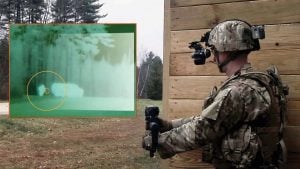
The inset image shows what the soldier can see through the wirelessly linked ENVG-III goggle and FWS-I gunsight.
“Soldiers aren’t thrilled with large things on their face,” Potts said drily. “So we’re talking to the soldiers, and they were complaining about the early form factors, and our answer was, ‘hey, you want to see 900 meters, and it’s kind of a physics problem.’ And our soldiers said … ‘why do you think I need to see 900 meters?….We don’t care.’”
“We said, ‘What do you care about?’” Pots recounted. “They said, “We care about our peripheral vision…. If you can give me more in my peripheral, we’ll take less in distance.”
So the next iteration dropped the range it could ID a target from 900 meters to 300 – but doubled the width of its field of view, from 40 degrees to 80.
“We showed it to the soldiers and they went, ‘That’s what we want….and by the way, we can still see 900 meters.’” While the streamlined version of the IVAS could no longer see clearly that far with its built-in sensors, the new FWS-I gunsight on the soldiers’ weapons could – and the gunsight was linked wirelessly to IVAS so it could pop up a picture-in-picture view whenever the soldiers wanted.
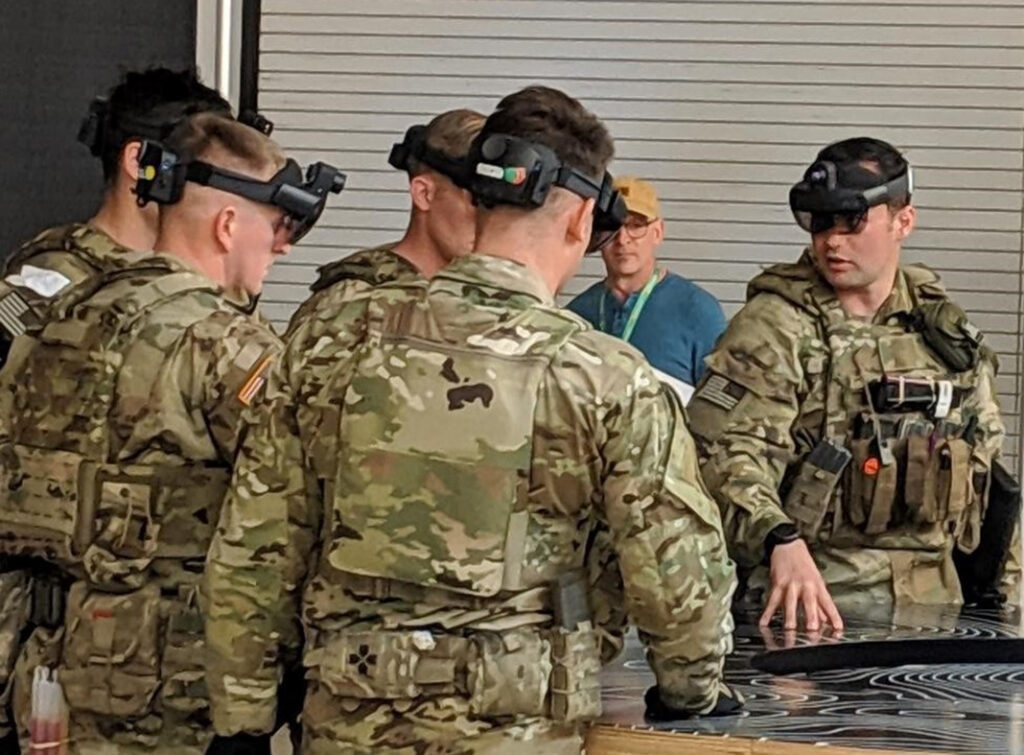
Soldiers use their IVAS goggles to view replays and analysis of a training exercise.
There were other cases where Potts and his team thought some aspect of IVAS needed improvement, only to find the soldiers didn’t care. For example, in training mode, IVAS can project simulated enemies that move, shoot, and react to “hits” from the soldier’s weapon. The early versions of these “avatars” were pretty crude, Potts told me after his talk, especially compared to the commercial video games most young recruits are used to.
“We thought, ‘this is where we’ll get a lot of criticism from our soldiers,’” he said. Instead, the soldiers were so excited about the ability to train against virtual enemies and get an instant replay to analyze their tactics, that they ignored the cartoony graphics. “We found that they started just using it as a training device immediately, even in this rudimentary stage,” he said. “We were [saying], ‘okay, we know that it’s not great,’ but they loved it.”
That said, Potts told me, the Army is working on more realistic avatars anyway.
Saying ‘No’ To ‘No’
The rapid cycle of field-testing, feedback, tweak, repeat has been grueling for many of the soldiers and civilians involved, Potts told the conference. “I actually had to declare Thanksgiving week a down week,” he said. “I wrote every one of those people that had been living in the field for two months an eight-hour pass and said, ‘You all get eight hours. Go home.’ And I told everybody else, ‘You don’t get to come see our IVAS team.’”
In fact, Potts said, one of his major jobs is simply keeping all his superiors off his subordinates’ backs. There’s simply so much interest in IVAS that work would grind to a halt if the team stopped to brief every single VIP who wanted to see it for themselves.
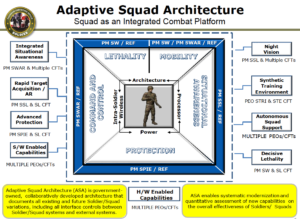
The new IVAS headset will be the linchpin at the center of an Adaptive Squad Architecture to connect soldiers’ electronics.
“I spend my days telling people no. No, you can’t come see us; no, you can’t visit people at Redstone; no, I’m not going to do an IVAS demo for you; no,” Potts said. “By the way, even though it sounds important that I’m wearing one star, there are people that wear two stars, and three stars, and four stars….and they’re not pleased when I use the word ‘no.’”
The very serious flipside of Potts saying “no” to all these dignitaries is that he’s not letting people say “no” to changing IVAS, either. Traditionally, weapons programs are defined by strict formal requirements, and any change requires months – sometimes years – of consultation, negotiation, and consensus-building among different Army branches and bureaucracies. On IVAS, there are no rigid requirements and no halts, just constant cycles of field-test, feedback, fix.
“It makes people who used to have the authority to tell you ‘no’ very uncomfortable,” Potts said, “because we no longer stop the process to go in and [consult] 30, 40, 50 people… none of whom have the authority to tell you ‘yes’ but want to tell you ‘no.’”
(Former Army acquisition boss Heidi Shyu likened the traditional process to a long bus where every passenger has their own set of brakes).
The IVAS effort started out under the nickname “HUD 3.0” in early 2018. “Very few people believed we could build this program in two years,” Potts said. “I promise you if we had to stop for everything that I’ve had to stop for in the past, it would absolutely not be possible. Not possible at all.”
Connecticut lawmakers to grill Army, Lockheed about job cuts at Sikorsky helicopter unit
“The Connecticut delegation has questions about why, with that [FY24] appropriation in hand, this happened,” said Rep. Joe Courtney, D-Conn.


























